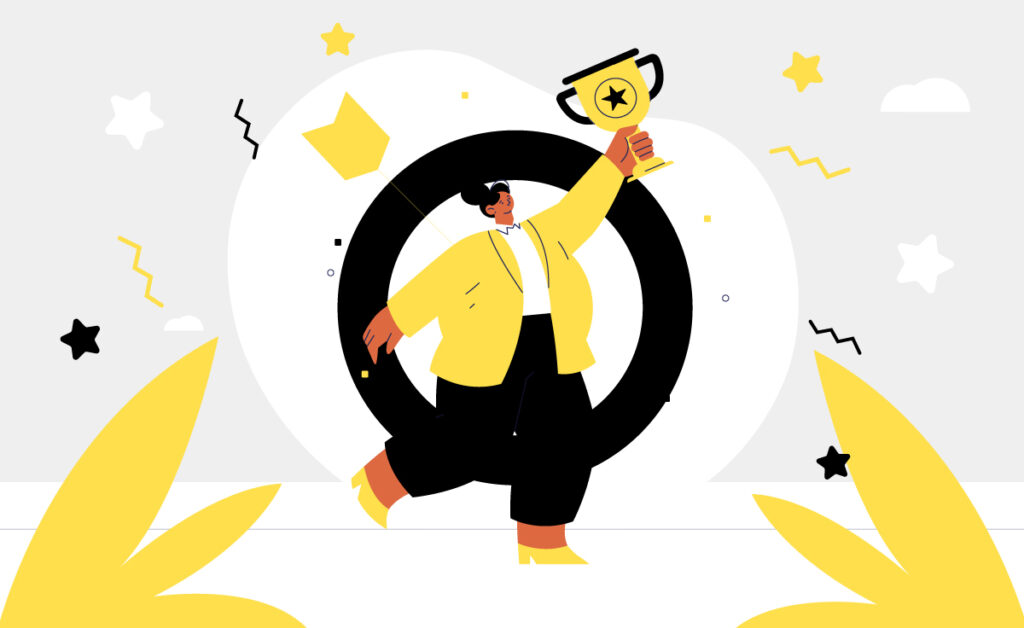How important is the content on your website?
On a scale of 1 to 10, we would probably put it on 15. It is often the first touch point for a prospect who has discovered or stumbled upon your website. In the absence of a human driving sales, the content needs to speak, connect and convince the customer to trust you enough to take their journey with you.
Let’s add a few real-time complexity layers to this. Your brand is new or relatively less known among its users. Another layer is your competition who is also wowing your customer either with product and service quality or price points and discounts. To add to this, there is the search engine layer which determines the usefulness of your website based on its content and the user journey it creates.
So you see, content is the one thing you simply shouldn’t take a chance with as it can make or break your business. Most people, though, when making websites, approach it like a commodity that can be brought off the shelf. They think that you can get ‘almost any writer’ to write content and often choose to work with the person who offers the best price.
The choice of who works on your website content is a big decision. And since everyone loves a good checklist, we’ve made one that can come handy when you have to get down to writing clear, concise and converting content for your website. Let’s get you started on the journey from good to great content.
1. Allow content to shape design
While most people generally pick a design theme and fit content into the available buckets, try doing the reverse to see that you are covering things from a user journey perspective. Here are some of the questions you need to find answers to:
What would a new and returning user expect from the website?
Where would they most likely go to fulfill their intention of interacting with or purchasing from your brand?
What are the quick wins for user gratification?
What are the key demographic buckets for your users and will their needs on the website vary?
How will you generate trust with content?
What are the best ways to showcase?
As you answer these questions your answers will most likely be a series of pages which allows you to showcase the answers. This will lead you to step 2.
2. Determine all the pages you’ll need on the site in the next year
One year?
Yes, that’s right. You see, getting a chunk of your planning done when you create the website will save you both time and money. Going back to create small buckets of content which you have missed out will definitely come at an additional cost which is the result of not planning well in advance.
Your website will have two sets of pages – static and dynamic.
Static pages are mostly functional pages like About us, Contact Us, FAQs, Service pages, Team, Vision and Mission and the likes which won’t change on a day to day basis. Of these, two important pages you simply shouldn’t miss are ‘Privacy Policy’ and ‘Terms and Conditions’, which will keep you safe in a worst-case scenario. The second set of pages are dynamic which will get added as you push new content. It could be new products, listings or blogs that will add depth to your existing content.
At this stage when you are creating a new website, you can create content templates and guidelines which can work as the beacon for the coming year. Put down a set of clear static and dynamic pages which will allow the assessment of the volume of content that needs to be created before launch and after launch.
3. Create content templates
Most pages or set of pages on a site will follow a content and design format which will ensure that you don’t have to go back to the drawing book every time a new asset has to be created. Here are some of the features you can consider having on your pages
a. Feature image
Images are as much a part of the content as words, and they often speak louder. You’ll have to zero in on images for your site either from your own stock or by purchasing from an online image bank like iStock. A lot of times, when you are in the under-construction phase, it is great to identify free stock photos as a filler which will give you an idea on the look and feel without costing a ton of money. Want to know where to find them? See our detailed blog about the top free stock photo sites on the internet. Also think of the size of the image, dimensions, and plugins required to ensure they look good even after compression.
b. Headline
The statistic that 80% people don’t read beyond the headline is enough to get thinking what the headline for each page should be. You can have an intriguing hook, a question or a statistic along with the keyword for the page in the headline.
c. Short and long description
The short description, along with the headline, will be the pull factor for the page when someone discovers it via search. The long description will contribute to the ‘authority’ factor of the page which will build user trust in terms of topic expertise. Search engines are often said to love pages having upwards of 2000 words.
d. Meta and SEO information
The additional meta title, description, keywords, img name, img alt text, link name, and alt text, schema and structure form the important information set that you need to have for search engines to read and rank your page.
e. Testimonial
Genuine testimonials are the best way to build trust into your products and services. But it is important to not have this as sketchy or untruthful. You can use a third party industry reviewer where possible to give a neutral view.
f. Social proof
The likeability and sharability of content can be a great pull factor for its visibility and trust. Make your prime content, especially on the blog to be easily shareable and also provide additional proof by sharing your follower numbers on popular social platforms.
g. Call to action
This is by far the most important part of the page. Whether it is a form or a link or a request to share or a purchase push, think what the outcome to be when the user visits that page as a stand-alone and how it works out in the entire user journey.
h. Additional content formats
Beyond words and images, content can take the form of videos, infographics, gifs, memes, charts, graphs, timelines and more. One piece of content can be created in different formats with different stories depending on the audience need. Think of all the formats you want for your content which can be used now and later.
4. Set content key performance indicators
So your website is up and running and you now have a bunch of analytics with a lot of data. But is it good enough?
To know the answer to this question, set key performance indicators with your content agency before the website launches. With the rider of expected traffic, determine the percentage of traffic that will take the desired action that can lead to a business outcome for you six months from launch. Only then will you know what’s working with your content and what needs to change.
Crafting content is both a science and art. It has its base firmly set on data but the crafting done with some creative genius. Need help tracking how effective your website content is and how we can make it 5x better? Write to us today.





